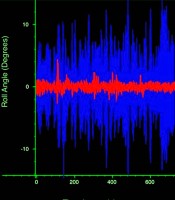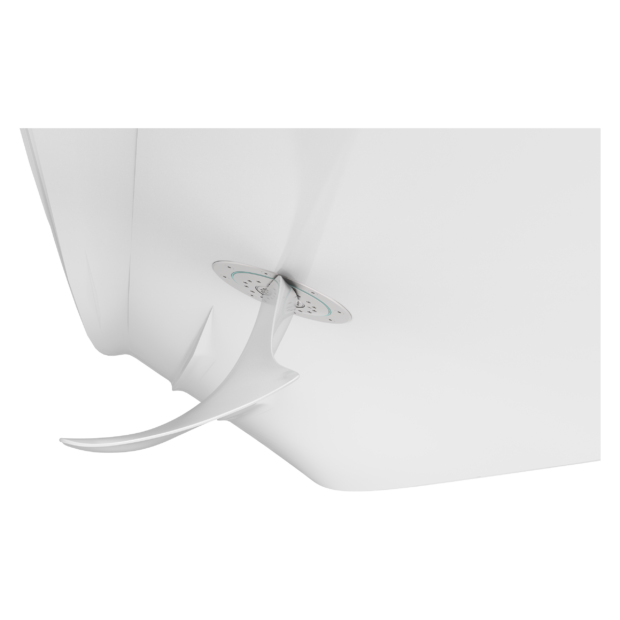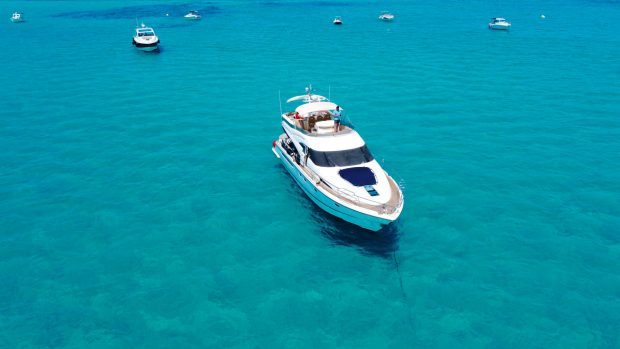The new battery-powered 3DC gyro from Seakeeper could revolutionise the market for zero speed stabilisers, writes Dave Marsh
Barely a month goes by without some new development in stabilising systems appearing – this is a terrific time for boat owners whose appetite for rock and roll is confined to Led Zeppelin and the Rolling Stones.
The last time we flagged up Seakeeper was only eight months ago, shortly after the California-based company had released its smallest ever Gyro.
Its diminutive Seakeeper 5 was notable for its compact size and a price which made it suitable for boats as small as 30 foot.
However, the US company, whose manufacturing plant in Pennsylvania covers a sprawling 90,000ft2 now has a new starter model, the Seakeeper 3DC (pictured below).

At first glance the spec is perplexing – the 3DC has exactly the same compact dimensions of 30.1 x 29.8 x 24.7 inches (765 x 757 x 628mm) as the preceding 5 model. Also exactly the same starting price of $29,900. Its weight of 358kg (790lb) is also identical to the 5.
Power from a battery
The big difference, and the reason why the 3DC is such a significant development, is that the new Seakeeper can be battery powered.
Okay, the motor itself still needs to draw its 900W maximum via a true sine wave inverter (110-230V, 50/60Hz, single phase) but the 100W Gyro control system is fed from a simple 12V supply. Hey presto, modest boats without generators now have access to stabilisers!
In order to achieve that low power battery operation, the new 3DC spins at 6,400rpm instead of the 10,700rpm of the Seakeeper 5.
Consequently, its maximum 6,500Nm of anti-rolling torque is almost exactly half that of its rotationally faster sibling.
That explains why Seakeeper says it’s suitable for boats up to 40 foot, whereas the company states that its 5 model can handle 50 footers.
One significant benefit of its slower rotational speed is that the 3DC is noticeably quieter; 62-64dB(C) versus 70-72dB(C) for the 5, measured from a metre away.
Bear in mind that 65dB(A) is the generally accepted level of normal human conversation, so completely cloaking the sound of the 3DC should not be difficult provided it lives in a well insulated space.
 In late April this year, Seakeeper conducted initial tests on a 35ft long, 10ft wide, 6 tonne open decked US sportfishing boat with a stepped hull called the Contender 35ST.
In late April this year, Seakeeper conducted initial tests on a 35ft long, 10ft wide, 6 tonne open decked US sportfishing boat with a stepped hull called the Contender 35ST.
In conditions that Seakeeper says comprised three-foot significant wave height and 15 knot winds with gusts up to 30 knots, the company reported a 94% reduction in roll.
According to the graph (see above) with the 3DC engaged, most of the residual rolling was reduced to 1º or less, a level at which Martinis barely get shaken, let alone stirred.
Gearing up for action
Like all gyros, it takes time to spool up to operational speed. In the case of the 3DC that is 27 minutes to the point where stabilisation is engaged, and another 11 minutes to full rated rpm.
Zero-speed fin devotees like to point out that this waiting time can be a nuisance, but I feel it’s really no big deal as long as you switch the 3DC on as soon as you step on board.
By the time you have packed away your kit, carried out a safety briefing, and crawled gently out of the marina, few of us get under way in less than half an hour.
And also like all gyros, the 3DC can be sited almost anywhere convenient. For instance, on the Contender 35ST, the 3DC sat directly on deck in a small locker.
On small boats, where space is often at a premium, that is potentially a huge benefit. The only caveat to this freedom of placement is that on boats that regularly experience vertical accelerations greater than +/-1.0g, it needs to live aft of the longitudinal centre of gravity (LCG).
All told then, I feel that Seakeeper’s modest claim of a starting point of 30ft does not reflect the 3DC’s full potential.
Assuming that shouldering an extra 358kg is not going to trouble your boat (and that is only about four adults’ worth of weight, or a typical PWC) then its compact dimensions, battery power, and ability to be mounted nigh on anywhere aft of the LCG, should in theory allow it to be installed on almost any size of boat whose owner can afford its $29,000 – roughly £18,600 (plus fitting costs) as of mid July.
And given how on-board comfort is becoming an ever more appreciated aspect of boating, even on a small and inexpensive boat that seemingly extravagant £19k may feel like money well spent.











